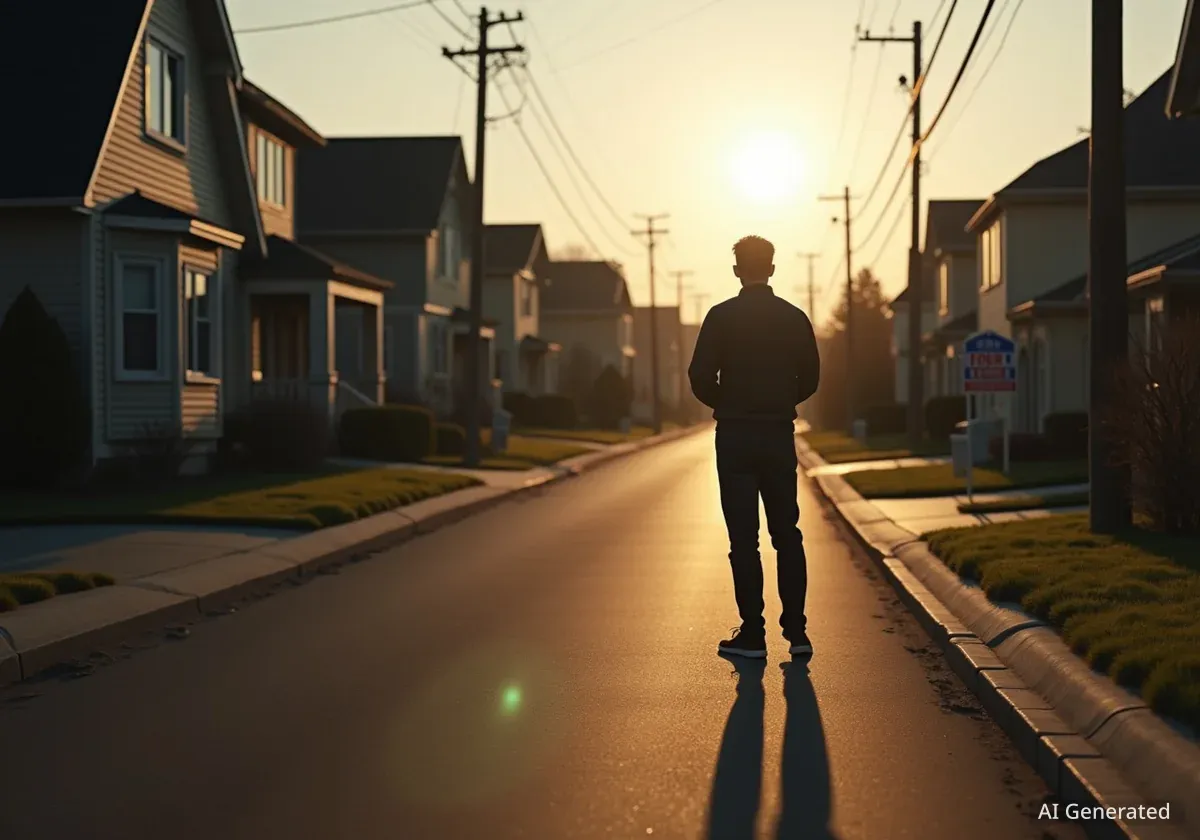The United States housing market is experiencing its most significant shift in favor of buyers in over a decade, with a growing surplus of homes for sale compared to active shoppers. However, this newfound leverage for buyers is overshadowed by a persistent affordability crisis, leaving many potential homeowners unable to enter the market.
Recent data reveals the largest gap between sellers and buyers since 2013, a dynamic that typically allows for price negotiations and concessions. Despite this, high home prices and elevated mortgage rates continue to sideline a large segment of the population.
Key Takeaways
- The number of home sellers surpassed buyers by 36.8% in October, the widest margin in over ten years.
- This is considered the strongest buyer's market since the years following the 2008 financial crisis.
- Despite market conditions, housing affordability is at a low point, preventing many from purchasing a home.
- National home prices remain approximately 50% higher than they were just five years ago.
- Experts note that only buyers with strong financial standing can truly capitalize on the current market leverage.
A Decade-High Advantage for Homebuyers
The balance of power in the real estate market has decisively tilted. In October, the number of sellers exceeded the number of active buyers by an estimated 36.8%, according to real estate brokerage Redfin. This marks the most substantial imbalance recorded in records that go back to 2013.
A market is generally defined as favoring buyers when sellers outnumber buyers by at least 10%. The current conditions far exceed that threshold. Economists suggest that the last time buyers held this much power was in the period immediately following the 2008 financial crisis, a time characterized by widespread price declines.
In some areas, this shift is already tangible. Paul Legere, a buyer’s agent with the Joel Nelson Group of Keller Williams in Washington, D.C., noted that buyers are becoming aware of their position. “They are figuring out they have leverage and are finding they can seek price concessions and repairs,” he said, adding that it “feels like it might be a short moment in time.”
The Paradox of an Unaffordable Buyer's Market
While the surplus of inventory creates opportunities, a significant hurdle remains: cost. The very definition of a buyer's market is being tested when a large portion of potential buyers cannot afford to participate.
“Of course, it’s only a buyer’s market for those who can afford to buy—many Americans have been priced out of the housing market as affordability has eroded,” researchers from Redfin noted in their report. This sentiment is echoed across the industry.
By the Numbers: The Affordability Challenge
- Home Prices: Nationally, prices were 1.2% higher in September compared to the previous year and are roughly 50% higher than pre-pandemic levels five years ago.
- Mortgage Rates: Current rates are approximately double what they were in the early years of the pandemic.
- Overvalued Markets: About 75 of the top 100 housing markets in the country are still considered overvalued.
The National Association of Realtors (NAR) recently identified housing affordability as the single biggest challenge facing real estate firms, outweighing all other business concerns. “Real estate firms are on the frontlines of the industry and are seeing firsthand how housing affordability and local economic conditions are impacting their clients,” said Jessica Lautz, NAR deputy chief economist.
Economic Pressures Squeezing Potential Homeowners
The current economic climate is creating a split in the market, often described as a "K-shaped" trend. Higher-income individuals are better positioned to weather financial storms, while lower-income households face mounting difficulties.
“Lower-income potential homebuyers are facing challenges due to an uncertain job market, sluggish wage growth, and worsening financial conditions. This is leading to weaker demand for homes and downward pressure on prices.”
This division highlights that the market's theoretical advantages for buyers are not accessible to everyone. The combination of high living costs and stagnant wages for many Americans makes saving for a down payment and qualifying for a mortgage a significant challenge.
Builder Confidence Wanes Amid Weak Demand
The construction industry is also signaling caution. The National Association of Home Builders (NAHB) reported a drop in builder sales expectations for the next six months in its November sentiment survey, pointing directly to issues on the buyer side.
Why Builder Sentiment Matters
Builder confidence is a forward-looking indicator for the housing market. When builders are pessimistic, they tend to slow down new construction. This can lead to a tighter supply of new homes in the future, potentially putting upward pressure on prices once demand recovers.
The slowdown is a direct response to the affordability crunch. “We continue to see demand-side weakness as a softening labor market and stretched consumer finances are contributing to a difficult sales environment,” explained NAHB Chief Economist Robert Dietz.
For now, the housing market remains in a state of contradiction. While data shows a clear advantage for buyers with available capital, the broader affordability crisis means that for many, the dream of homeownership remains just out of reach, regardless of how many "For Sale" signs are on display.





